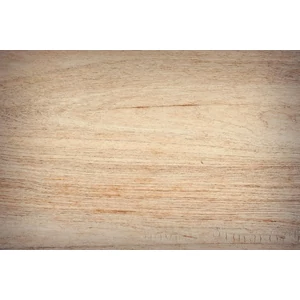This article is the first part of our series introducing the materials used in Italian furniture, focusing on wood-based panels and decorative techniques. Our aim is to provide a comprehensive overview of why these materials form the foundation of premium Italian furniture.
Premium furniture materials in Italian furniture making
Italian furniture making is renowned worldwide for combining high-quality materials and sophisticated craftsmanship in perfect harmony. The choice of material determines a piece of furniture’s durability, aesthetics, and value. Masters carefully select the raw materials to ensure that the result is not only beautiful but also long-lasting. Below, we present in detail the wood-based panels and solid woods most commonly used in the production of Italian furniture.
Fibreboard
Fibreboard is one of the most widely used furniture materials, made from finely ground wood fibres pressed under high pressure. Italian manufacturers often use it for the internal structural parts of furniture, such as back panels or drawer bottoms. Its main advantage is that it is lightweight yet provides stable support, preventing unnecessary heaviness. Its smooth surface can be easily covered with decorative foil or veneer to match the more visible parts. Although best suited for indoor use, Italian designers skillfully combine it with other materials to ensure both durability and style. Interestingly, fibreboard dates back to the mid-20th century as a way to recycle wood waste, but today it has become one of the cornerstones of sustainable furniture production.
MDF
MDF, or medium-density fibreboard, is one of the favorite materials in Italian furniture making. Its extremely uniform and smooth surface makes it ideal for painted and lacquered finishes, as well as precise milling. Manufacturers appreciate it because it is easy to shape, allowing for intricate patterns, moldings, and curved elements. MDF furniture retains its shape over time, resists warping, and pairs well with premium materials such as real wood veneer. Italian craftsmen frequently use it in kitchens, living rooms, and bedrooms. Since the 1980s, it has gained increasing popularity as a more economical alternative to solid wood, while still offering an equally refined aesthetic. It is no coincidence that luxury Italian kitchens often feature MDF fronts.

HDF
HDF, or high-density fibreboard, is the most durable member of the family. It is denser and stronger than MDF, making it highly resistant to mechanical stress. In Italian furniture production, it is mainly used for back panels, door inserts, and extra-thin yet sturdy panels. Thanks to its dense structure, it is less prone to cracking or warping. While heavier, this adds stability to the final product. HDF is an excellent choice when designers want to combine durability with a flawless surface finish. In many premium Italian furniture pieces, the secret to internal stability lies in this very material.

Veneered board
Veneered board is one of the Italian design’s favorite tricks: the core may be a wood-based panel, while the outer layer is genuine wood veneer. This allows the furniture to retain the natural beauty of wood while remaining more cost-effective than solid wood. Veneer may come from oak, walnut, cherry, or exotic species, depending on the mood the designer wishes to create. Italian masters often combine this technique with inlay or high-gloss lacquer, achieving a unique appearance. The silky touch and rich depth of color of veneered surfaces provide a special experience for the user, while ensuring long-lasting elegance.
Beech wood
Beech is one of the cornerstones of Italian furniture making, especially for chairs, table legs, and bentwood elements. This hardwood is both strong and flexible, making it suitable for creating complex shapes. Its light, uniform color absorbs stains beautifully, allowing designers to adapt it to a wide range of styles. Beech wood withstands daily use and resists wear over time. Historically, the pioneer of bentwood furniture, Michael Thonet, preferred beech for his iconic chairs – a tradition still alive in Italian workshops today. It is no surprise that it is found in both classic and modern collections.
Oak wood
Oak is synonymous with timelessness and elegance in furniture making. With its distinctive grain patterns and hardness, it is a favorite material for rustic and classic-style furniture. Italian masters value oak’s natural beauty, which looks impressive even without staining. It is highly resistant to wear and moisture, maintaining its shape and color for many years. Oak surfaces can range from matte oiled finishes to high-gloss lacquer, fitting perfectly into any style. Not rarely, Italian designers craft heirloom-quality pieces intended to last for decades.

Tropical tulipwood
Tropical tulipwood is a unique, exotic material, known for its fine-grained texture and light weight. Its light yellowish hue blends well with most interior styles, whether modern, classic, or transitional. It is highly workable, with a smooth surface ideal for painting and lacquering, giving designers almost unlimited creative freedom. Thanks to its tropical origin, it naturally adapts to humid environments, making it moisture-resistant and suitable even for kitchens, dining rooms, or bathrooms. Italian furniture makers often use it for pieces where form and decoration are key. Less prone to warping, it offers longevity even in spaces with changing climates.

Conclusion
One of the most important secrets of Italian furniture making lies in the carefully selected materials. Fibreboard, MDF, HDF, veneered board, beech, oak, and tropical tulipwood all have different advantages, but they share quality and durability. These materials make Italian furniture elegant, functional, and long-lasting. Choosing them is not only an aesthetic decision but also an investment that will bring joy to your home for many years.
All these materials contribute to the lasting beauty and value of Italian furniture. In the next part of our series, we will explore upholstery, leather, eco-leather, different fabrics, and beveled glass – definitely worth staying with us!


